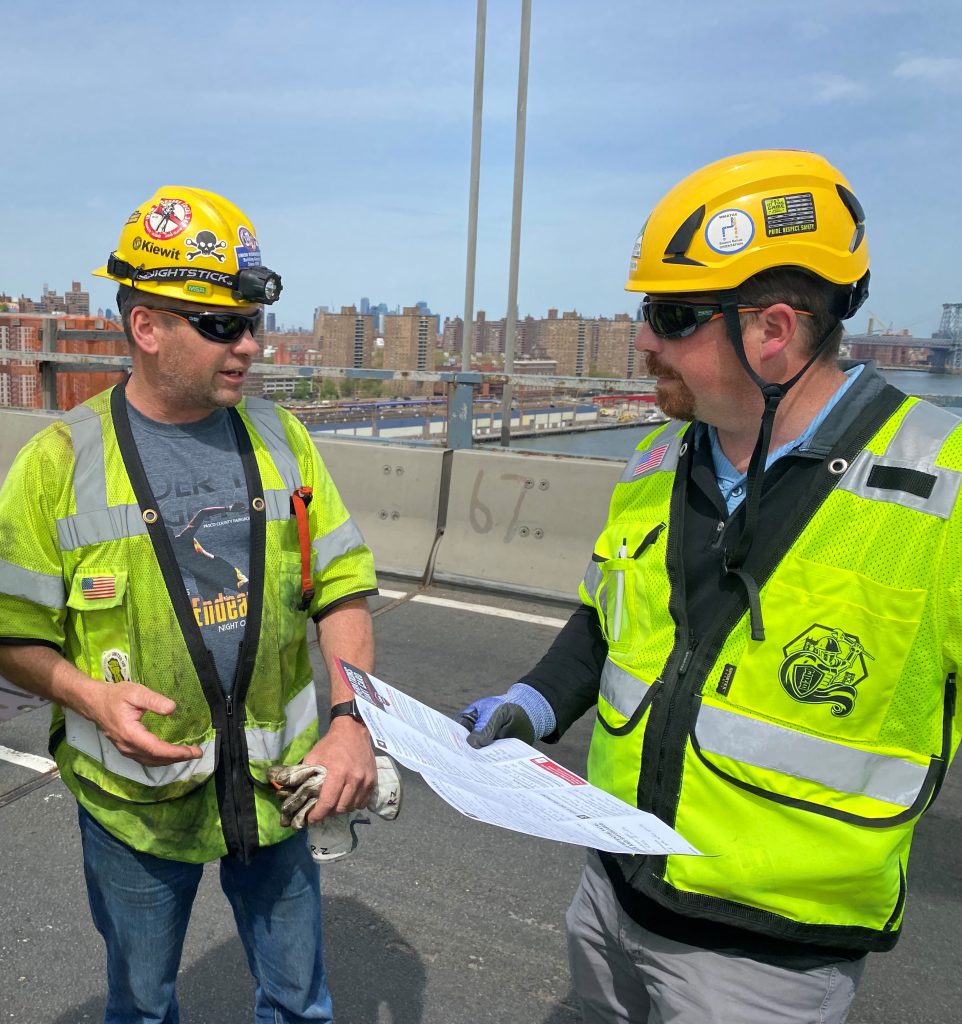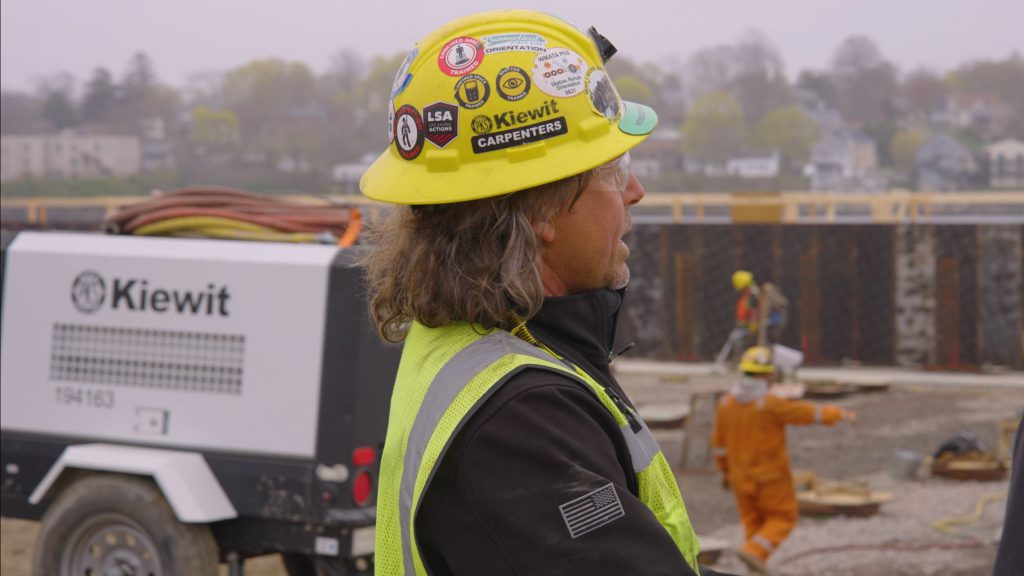After almost 10 months of research and development, the company launched the Operations Start Card, a replacement for all previous job hazard analysis (JHA) tools across the organization. The Start Card is part of Kiewit’s Life-Saving Actions (LSA) Program, which allows a project team to be proactive about eliminating significant injuries and fatalities through a structured, daily focus time before the start of every operation.
The Start Card was the result of an effort started back in 2020, when Alicia Edsen took over as Kiewit’s vice president of safety. One of her first focus areas was to understand how jobs identify, assess and mitigate risks specific to each operation. Through jobsite visits and discussions in the field, it became clear that jobs were using a variety of different JHA forms and often, people would have to re-learn how to do a JHA each time they started a new project.
Most notably, there was inconsistency in how front-line supervisors were verifying and validating LSA safeguards prior to the start of any operation.
“The overwhelming feedback we received from the field was that we lacked consistency with the JHA process from project to project, which led to confusion among the craft, staff and even our clients,” Edsen said. “We knew we had to look at a way to streamline this process across the entire organization.”
The road to the Start Card
In early 2021, Andrew Cowart, safety operations director and sponsor for development and implementation of the Start Card, formed a team of operations experts from across the organization to research and develop how we could streamline our JHA process to ensure safety expectations are clear companywide, and most importantly, further focus efforts on eliminating events that can cause severe injury.
Bud Wall, general superintendent at the Federal Way Link Extension project in Federal Way, Washington, was one of the team members.
“We took the time to do our homework on the best of the best JHA ideas from across the company and outside the organization,” he said. “We talked with a Kiewit group from Western Canada that used a type of ‘start card’ and they had very strong safety performance. We liked the idea of having everything we’d need to think about on one card that folds up and that you can carry with you.”
Dan Campos, construction manager at California Emergency Project Phase 2, was also a part of the research team, and he explained some of the thought that went into the development of the Start Card.
“We asked ourselves, ‘What is the real objective here?’ All of us on this team come from the trades and we’re putting ourselves back in those shoes,” he said. “We looked at it from a craftsperson’s point of view and we said, ‘What would be useful and most beneficial to them?’”
The answer was a new card that would identify what is happening on a given day and eliminate concerns about missing a step.
Setting every operation up for success
After months of development and testing in the field, the two-sided, quad-fold Start Card was launched companywide. The focus is to ensure employees evaluate risks and put steps in motion to mitigate them.
The Start Card is completed daily for each operation before the operation begins. While the Start Card covers many routine items such as specifying tasks and risks for the operation, identifying access, tools and personal protective equipment (PPE), the new card calls out specific items supervisors should consistently think about as they look for hazards.
This includes verifying all safeguards that will prevent life-changing events are in place before the operation begins. There are new things to think about on the card. A section named “Crew Check” challenges everyone to think about why they work safe and to ask whether the crew is both physically and mentally prepared to do the work that day.
A front-line supervisor must verify and sign off that all safeguards are in place before work can begin and review the same Start Cards throughout the day to verify safeguards are still in place and account for any change
in condition.
Start Card implementation
In October 2021, the Rondout Tunnel project in New York was one of the first projects to implement and train their people on the new Start Card as the main JHA tool. Matthew Cirish, the project’s safety manager, was a key part of the training and rollout.
“One of the biggest hurdles we faced with the Start Card implementation was that we’re a project composed of many different teams ― and those teams all historically used different JHA tools,” he said. “We knew we had to help everyone understand why this new, standardized card is going to make us safer.”
Cirish believes the Start Card has improved many aspects of the JHA process, including assisting front-line supervisors who are now more proactive and more involved in what’s going on in the field. He sees this form as a better opportunity to see the bigger picture, allowing the team to verify all the safeguards for an operation are in place. If not, he asks, “What are we doing about it?”
Additionally, Cirish believes the Start Card brings a new level of accountability for many of the staff. He likes to see the team review the work plans, then jump right into the Start Card. Mike Roberts, Rondout’s project safety manager, noted that implementation of the Start Card has created a proactive environment among the superintendents and the foremen. “If a new person walks into an active working area, the foreman proactively approaches the person and adds them to the Start Card and addresses the hazards and mitigations.”
Cowart noted that with any new tool introduced across the organization, implementation is a process and areas of the Start Card may need to be reevaluated and refined for maximum success and to see the results Kiewit wants. However, Cowart said, “the positive feedback we have received thus far and the buy-in we are seeing from our people shows us that we are headed in the right direction with the Start Card. While the Start Card is getting a lot of engagement, I believe one of the most important things is front-line supervisors engaging with the craft, helping them understand and mitigate risk — and we’re excited this tool will help start those conversations. It is our job to give our crews the best tools to start their workday with the right mindset to achieve our goal of Nobody Gets Hurt. The Start Card is a tool to help us achieve that.”




